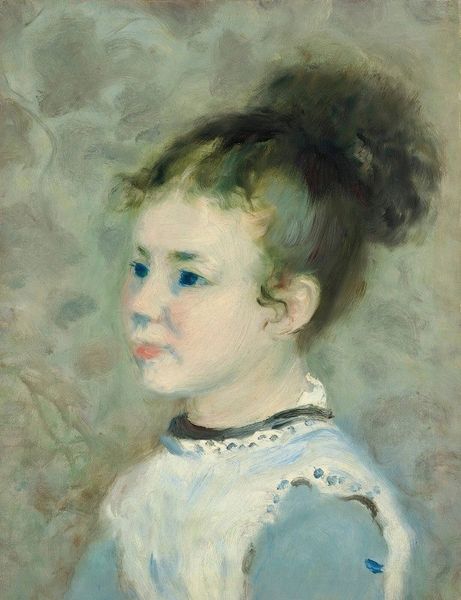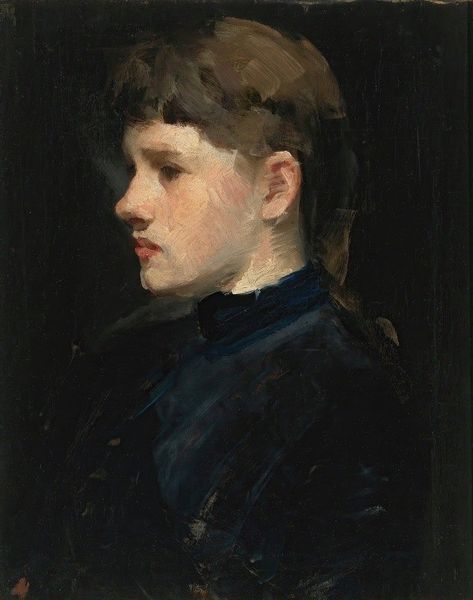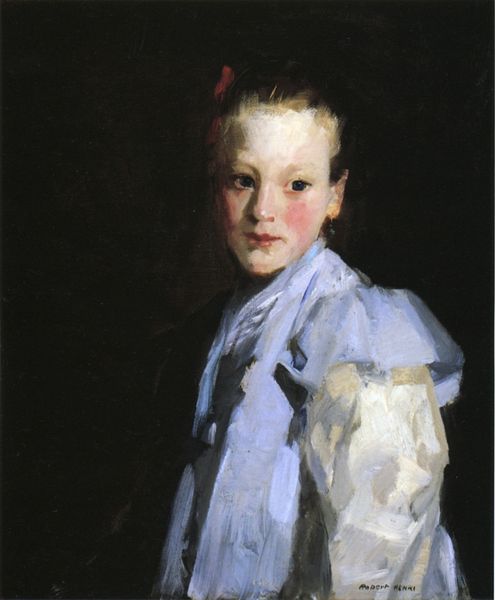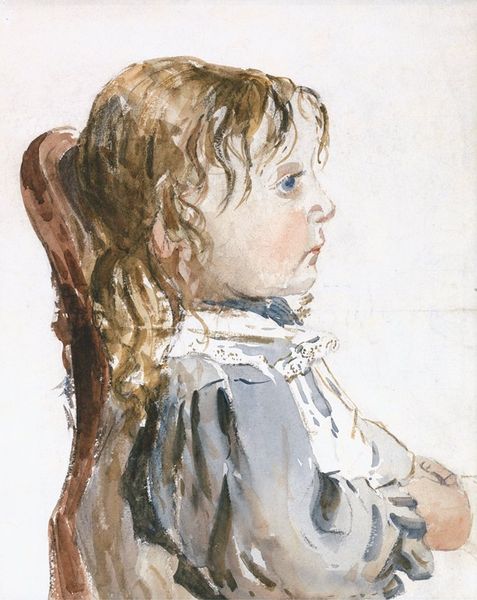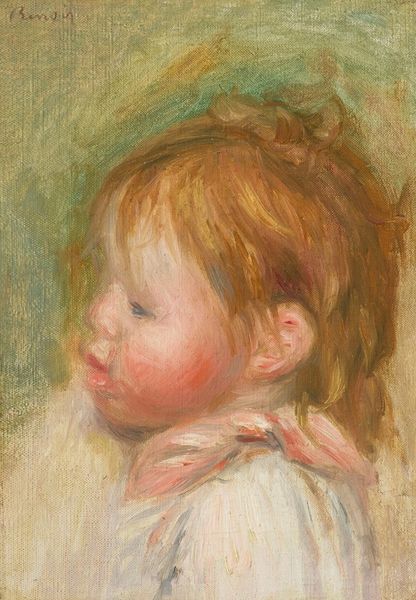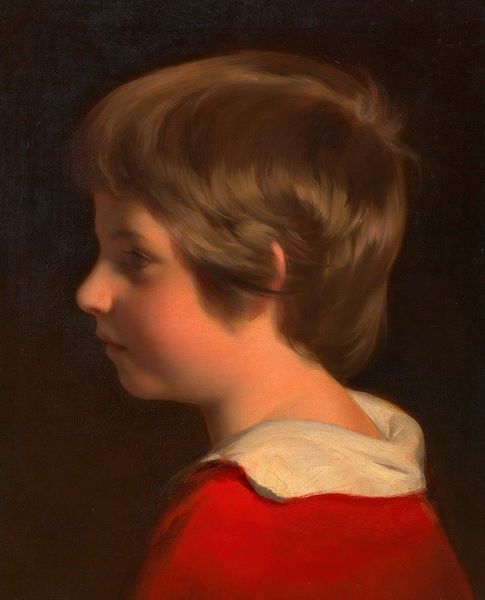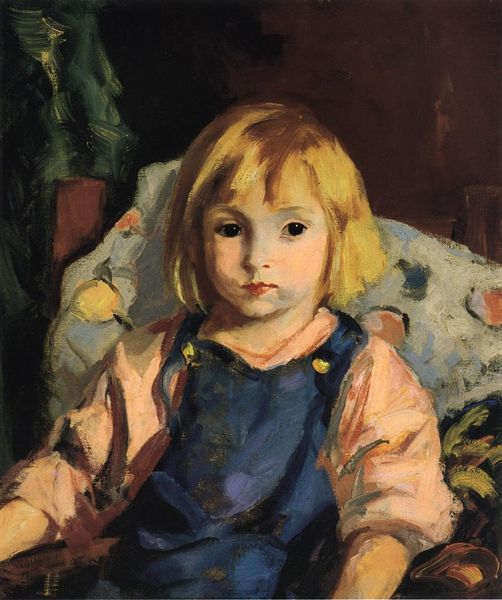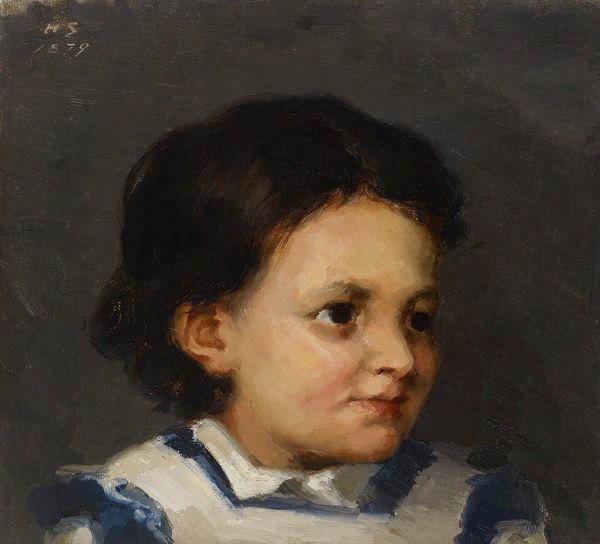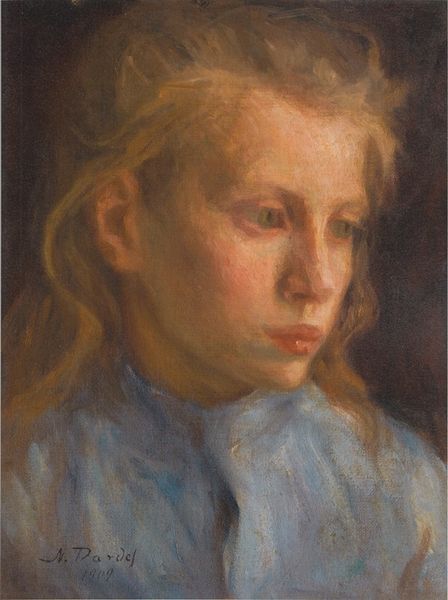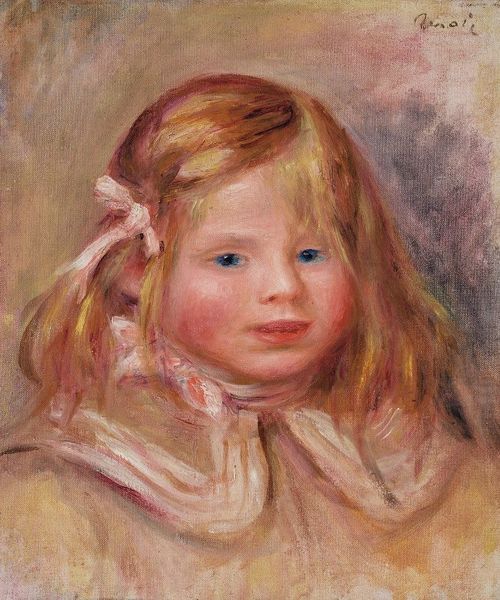
oil-paint, impasto
#
portrait
#
figurative
#
oil-paint
#
oil painting
#
impasto
#
romanticism
#
genre-painting
#
portrait art
#
realism
Copyright: Public Domain: Artvee
Curator: Let's turn our attention to "Portrait d’Alice Gamby" by Alfred Stevens. What are your first thoughts? Editor: There's something captivating in the rapid brushstrokes. You can almost feel the texture of the oil paint on the canvas. There's an immediacy here; not the glossy finish you find with some other portraits. Curator: It certainly moves away from rigid, academic portraiture, aligning with the realist and emerging impressionistic tendencies of its time. Stevens, as a painter popular amongst the Parisian elite, reveals quite a bit about social portraiture and how class informed his commissions. Editor: Indeed, the clothing, with its elaborate lace collar, suggests a degree of affluence. However, it’s how he's rendered the lace - not obsessively detailed but suggested through swift gestures. The material is evoked but its construction, its actual fabrication, is almost hidden, a blur in the paint itself. Curator: Precisely. It's less about perfect likeness and more about capturing an essence, or a social standing. Her pose is almost stoic, typical of how children from bourgeois families were taught comportment. The artist crafts more than an individual likeness. Stevens subtly promotes social values tied to gender roles and class status of the subject’s family, wouldn't you agree? Editor: Absolutely. There's a quiet confidence, maybe even a trace of apprehension in her profile. Note too how that dark backdrop forces the viewer to focus squarely on her, elevating the material importance of her garment. But I’m also struck by how raw it feels, an immediacy through the visibility of the brushwork; the process is almost as important as the product itself here. Curator: A good point. This tension is part of Stevens' skill—demonstrating how social identity could be both rigidly constructed and beautifully, transiently captured on canvas. Editor: Ultimately, it highlights not just the status of the subject but the labour, artistry, and economic support necessary for its creation. It reminds me that art exists within complex structures of making. Curator: So, on one level, we witness a privileged young girl, and on another, we glimpse at social portraiture's means and values during a specific historical moment. Editor: Leaving us with the question: what else remains obscured behind that lace and impasto? Thank you. Curator: An insightful prompt to close on. Thanks for your perspective.
Comments
No comments
Be the first to comment and join the conversation on the ultimate creative platform.
